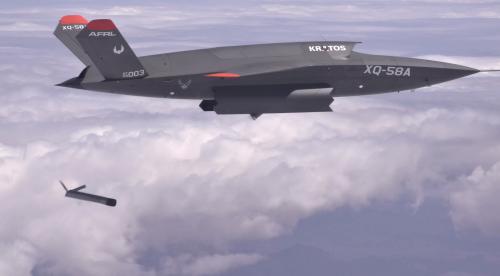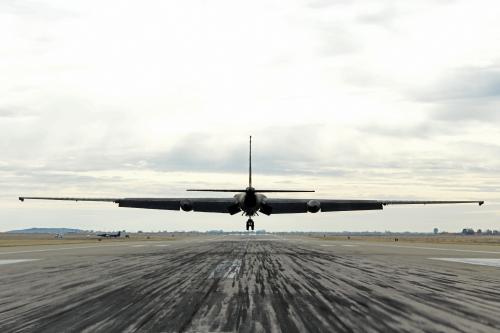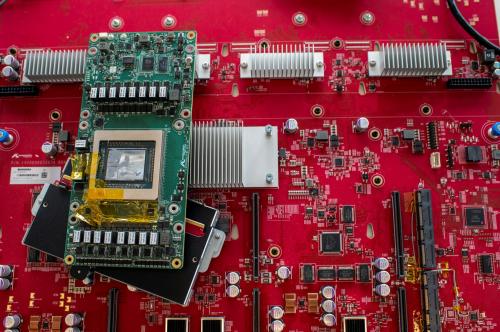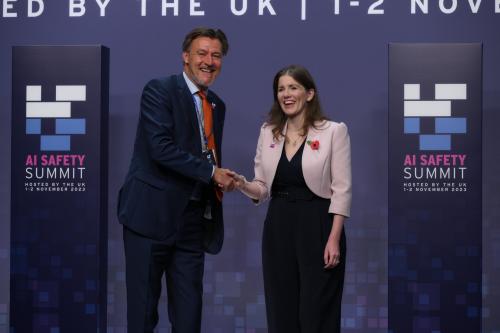In an unprecedented move, Dallas police used a remote controlled robot armed with an explosive device to end the shootings that claimed the lives of five officers. In a month filled with controversy surrounding the killings of two black men in Minnesota and Louisiana by police, the United States has resumed a deep examination of race relations, gun control, and police tactics. While deadly robots may serve a niche role in combat-like exchanges between police officers and suspects wielding high-powered assault-style weapons, they have little place in regular police work.
On July 7, Dallas police engaged in a violent standoff with a shooter targeting officers present at a protest of recent police killings. As negotiations broke down, officers were tasked with minimizing further loss of life as effectively and efficiently as possible. In a quick effort, police attached a pound of explosive to the arm of a Northrop Grumman Remotec Androx Mark V A-1 robot, a 790-pound multipurpose robot capable of surveillance, breaching, and bomb disposal. The robot detonated the explosive behind a wall where the shooter was hiding, killing the individual.
The use of robots in policing is not new. Used to deliver chemical devices, identify weapons, and even deliver pizza during negotiations, police robots enter tense standoffs between police and suspects. These robots are not autonomous; police remain the decision making agents, controlling the robot with a joystick. However, officers behind a computer screen are one step removed from intense situations where lives are at stake.
Protecting as many lives as possible while making accurate life-and-death decisions is the true struggle of police work. When tasked with maintaining public safety, an officer’s choice to use deadly force becomes a numbers game of protecting the most people, including the perpetrator and fellow officers. These decisions are immensely difficult and important in high-stress situations, yet remain inherently subjective.
The situation in Dallas was very clear. Officers were certain of their suspect and aware of the imminent risk to human life. In this circumstance, the use of a deadly force was justified to protect more lives. Though unprecedented, the use of a deadly robot will likely stand legally as well; when the use of deadly force is authorized, it is authorized in whatever forms necessary. However, this precedent must only be used under intense contemplation. When the situation is not as clear, placing officers behind the camera of a robot further complicates an already dangerous encounter.
But deadly encounters in policing rarely leave time to stop to contemplate every single step. Instinctively based on training, decisions to kill are made in a split second, and are ultimately subjective based on the officer involved. The use of robots introduces new complications to quick decisionmaking. Officers no longer are able to view the situation directly, and must make decisions from afar. While these robots are currently human controlled, the ongoing debate around drones and the possibility of autonomous tools in police work further challenges the precedent of deadly robots.
The debate over policing should always consider the proper use of technology. Given the high profile of recent police shootings, the use of force and de-escalation of dangerous situations must be reconsidered. Currently, the tool used to deliver deadly force still requires human input, whether that tool is a gun, knife, or an explosives-wielding robot. But the technology used can drastically change the decision to deploy deadly force.
As officers become further removed and face higher-powered weapons, policing begins to resemble warfare. But normal police work is not combat: arresting an individual is very different from a retaliatory attack on police with assault-style weapons. This distinction is critical when considering the technology used in policing. While robots may have a role in protecting police from shooters with military-style weapons, everyday policing needs a human component to create trust between officers and the communities they try to protect. While safeguarded behind a robot, officers lose that connection, turning suspects into threats that need eliminating.
Jacob Lineberry contributed to this post.






Commentary
Lethal robot marks a shift in policing tactics
August 2, 2016